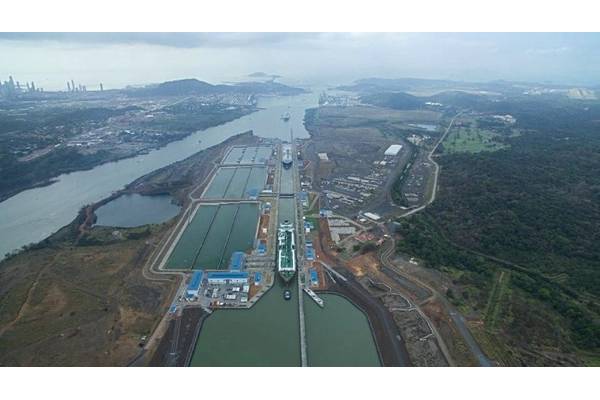

The Panama Canal may carry five times as much liquefied natural gas (LNG) in 2020 as it did last year as production of the fuel expands in the United States and Asian import demand rises, the head of the canal's governing agency told Reuters.
LNG volumes traversing the Canal could hit 30 million tonnes a year before the end of 2020, said Jorge Quijano, who leads the Panama Canal Authority, up from 6 million tonnes last year.
Demand for LNG has risen significantly in the last three years as the increase of supply, especially from onshore shale fields in the United States and offshore reserves in Australia, has made it more competitive. Many countries including China have also been switching to gas more rapidly than expected, away from dirtier coal, for environmental reasons.
The United States has only one LNG export facility, at Sabine Pass in Louisiana, which exports via the Panama Canal mostly to North Asia and the Pacific coast of Latin America.
But shipments are expected to surge over the next few years as several U.S. LNG projects are under construction, with total U.S. capacity slated to reach nearly 70 million tonnes a year, up from 18 million tonnes in 2017.
"Right now on average, we're running six (LNG) vessels per week, but in the very near future, you will have several plants exporting and that starts to add up," Quijano said in an interview with Reuters on Thursday.
U.S. LNG exports through the canal are set to rise to as much as 11 million tonnes this year and to around 20 million tonnes in 2019, he said.
Reflecting a quickening in traffic, three gas tankers transited the Canal in a single day for the first time on April 17. And since June 2017, there have been 15 days in which two LNG ships passed through the Canal in a 24-hour period.
Shipments of LNG through the Panama Canal began to rise after a third set of locks was added in 2016, Quijano said, and the authority projects growing demand for the supercooled fuel will boost such transits through the early part of the 2020s.
The Canal is already looking beyond the next few years to adding a fourth set of locks, which would serve a new generation of even bigger ships, Quijano said.
(Reporting by Osamu Tsukimori; Editing by Henning Gloystein and Tom Hogue)



